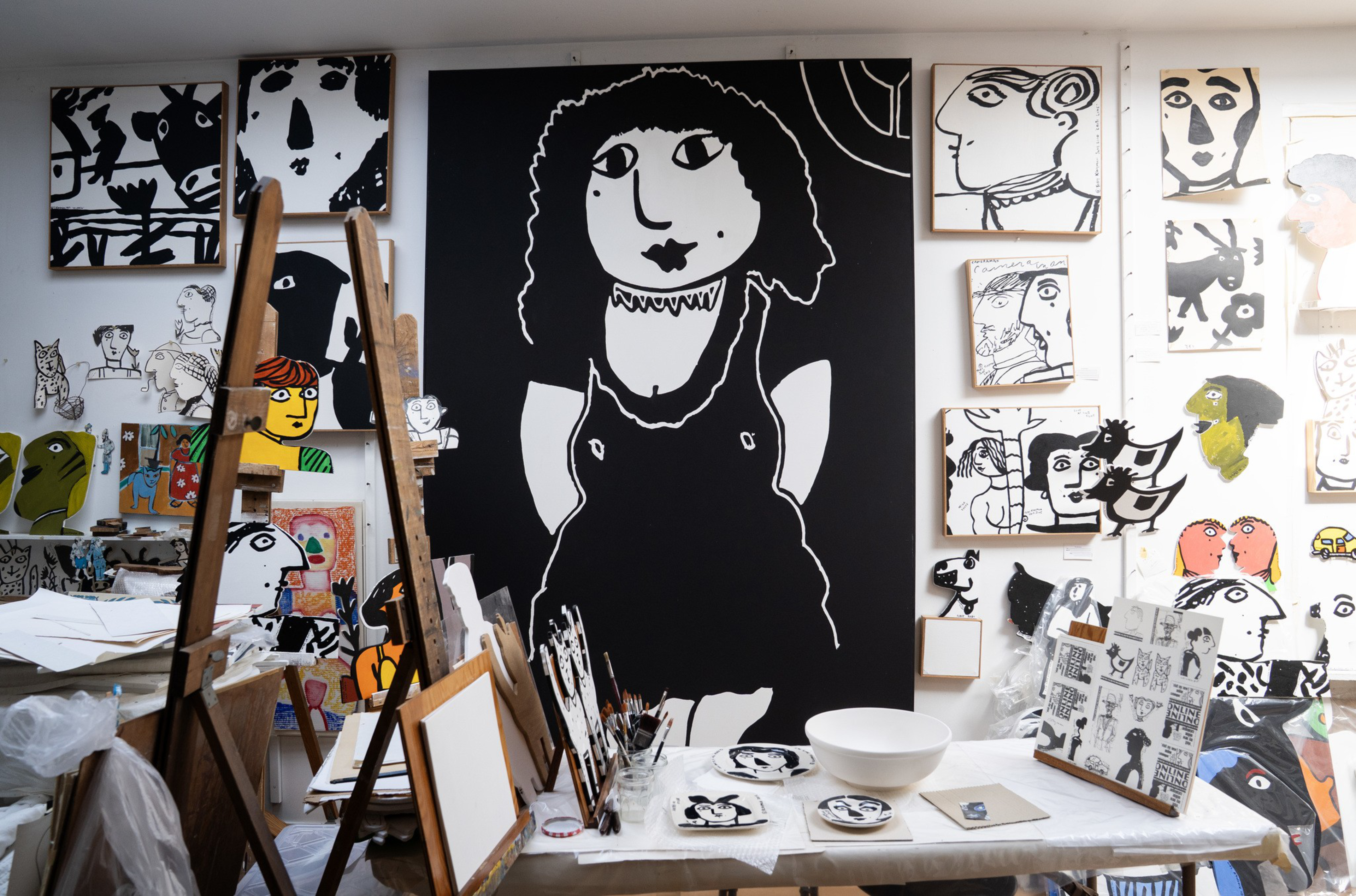Prentiss Street in Bernal Heights is as steep as they come. Pedestrians huffing and puffing up the street might miss the whimsical plywood cutouts — monochromatic animals, a figure of a woman — peeking from one of the houses. What’s harder to glimpse is the world they hint at: decades of art, texture, and color, created by one of San Francisco’s most prolific artists, Toby Klayman. (opens in new tab)
Klayman, 90, has been producing work in San Francisco since the 1960s, and the Prentiss Street cutouts are among her whimsical creations. Her bold, playful paintings, prints, and ceramics are prized by collectors, particularly tech workers at Google, Microsoft, Instagram, and Airbnb; the latter once turned her studio into a branded “Airbnb Experience.”
They are drawn to work that is part naive, part modernist, inspired by Toshusai Sharaku, the Japanese print artist famous for masks; France’s Jean Cocteau; and German painter and printmaker Max Beckmann. One of Klayman’s early large-scale canvases, “Garden of Eden,” recently sold to a private collector for $100,000. Far from slowing down in her 10th decade, she is gaining in visibility.

The Standard recently met Klayman and her husband of 28 years, the artist Joe Branchcomb, also 90, at the house, where the couple has crammed a lifetime of art and memories. One standout piece is a sculpture by Ruth Asawa of Klayman’s face, which she keeps in a padded shoe box.
She shares the space, and a sprawling 1,000-square-foot studio, with Branchcomb, whose colorful assemblages and watercolors mingle with her mostly black-and-white acrylics, prints, and ceramics, creating a home bursting with life and color.
Sitting in the kitchen surrounded by their creations, Klayman recounts how Airbnb CEO Brian Chesky asked her to participate in the company’s “Experiences” program after reading reviews of her artwork and back cottage.
“Brian invited me to come to the campus to present in front of 400 people. He said, ‘I know it’s your nap time, but we’ll send a car for you.’” Some of the people she met in that room have become her core circle of collectors, even as they have scattered across the world and the tech industry.
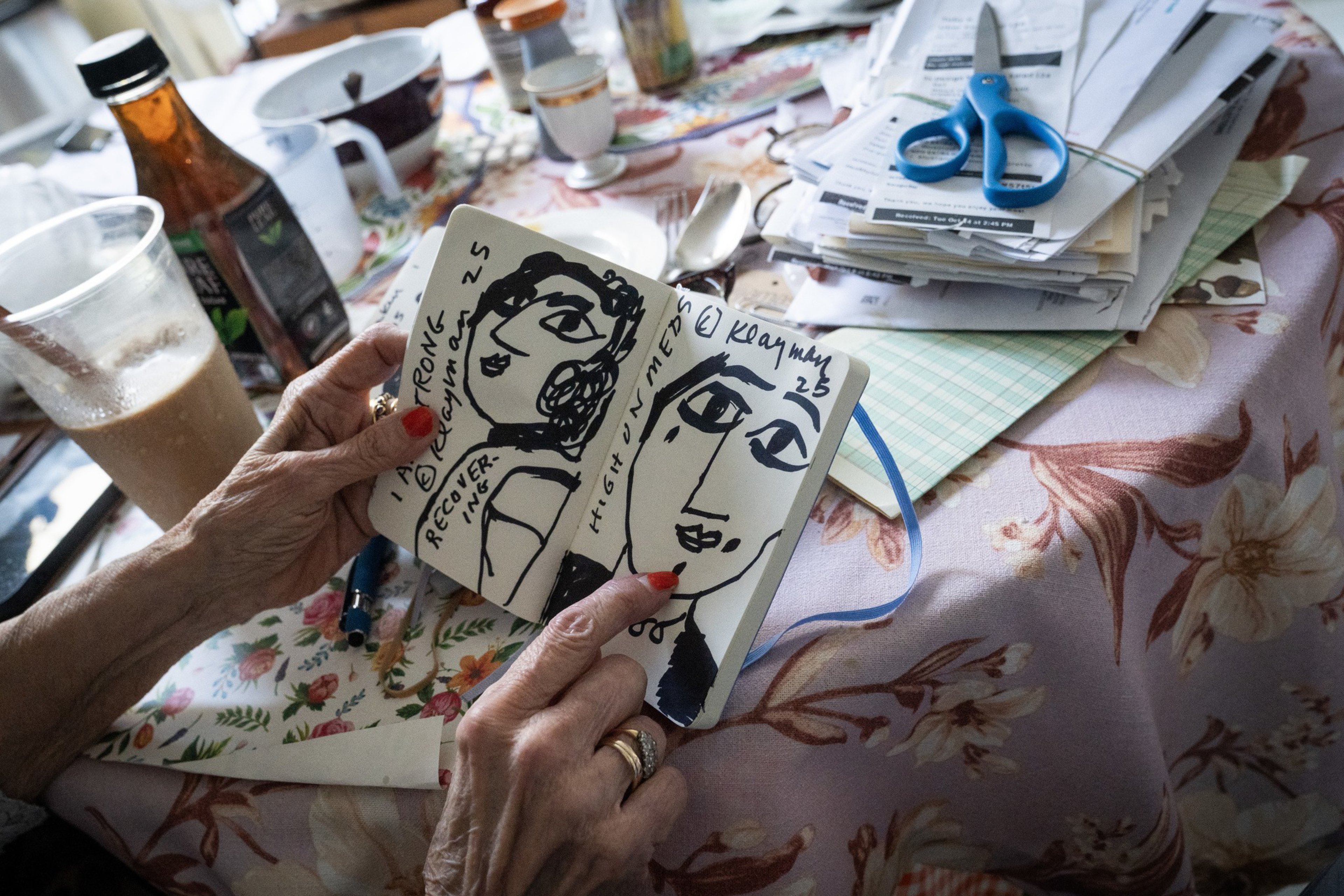

“Toby‘s art initially is appealing because it is deceptively simple, with bold brush strokes on different mediums with contrasting forms that feel almost childlike,” says collector Bola Akinsanya, global operations lead at Airbnb.“Her art just makes me happy.”
‘Toby didn’t have a patron’
Born in Providence, Rhode Island, and raised in Haverhill, Massachusetts, Klayman got serious about art at Brandeis University in the 1950s. First, she was interested in sculpting, until a boyfriend questioned that choice. “He said, ‘Sculpting is easy!’” Klayman recalls. “‘Try painting on a flat surface — it’s much harder.’”
She did — and fell in love with the medium and began hanging out with other artists around Harvard Square. She sold her first painting “after it dried,” for $100.


In 1966, with “$10 and three suitcases,” Klayman came to San Francisco to get away from Boston, where her acquaintances were experimenting with drugs “that were kind of scary.” Of course, that was a heady time for San Francisco, too, but Klayman settled into a side of the city far removed from the psychedelic Haight-Ashbury scene.
Klayman found a house on 30th Street and temped as a typist at Bank of America — “a horrible job,” she recalls. “We had to raise our hand to go to the bathroom.” In her spare time, she was drawn to jazz clubs, City Lights Bookstore, and Vesuvio Cafe.
Her big break came when a manager at Maxwell Galleries bought a piece. One introduction led to another, landing Klayman more gallery connections and a teaching position at City College that she held for close to three decades.
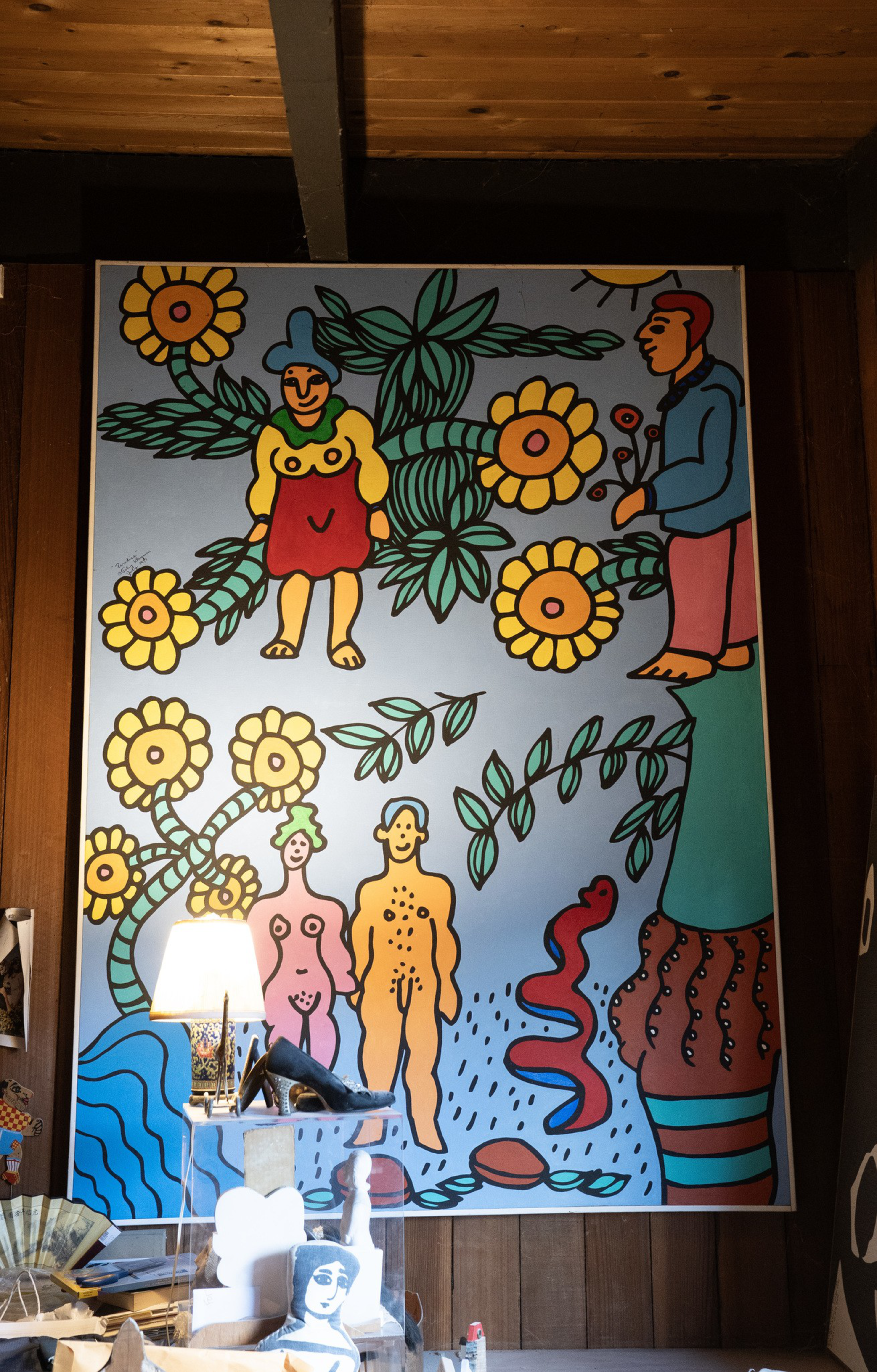
“Toby didn’t have a patron. She came out to San Francisco with almost no money and found a way to survive and flourish, and has been a mentor to many students,” says Larry Friedlander, a literature and theater professor emeritus at Stanford University who has known Klayman from her Harvard Square days and was her roommate in San Francisco for 14 years. “She’s one of the people who has made this a wonderful city for people who come here and carve out a creative path, which is increasingly more difficult.”
To Klayman, part of being an artist and teacher is mentoring people through the practical side of the profession. “I’ve taught thousands of people [how] to stay artists, in spite of the husband not liking it, the parents not liking it, even if you have to get a second job,” she says.

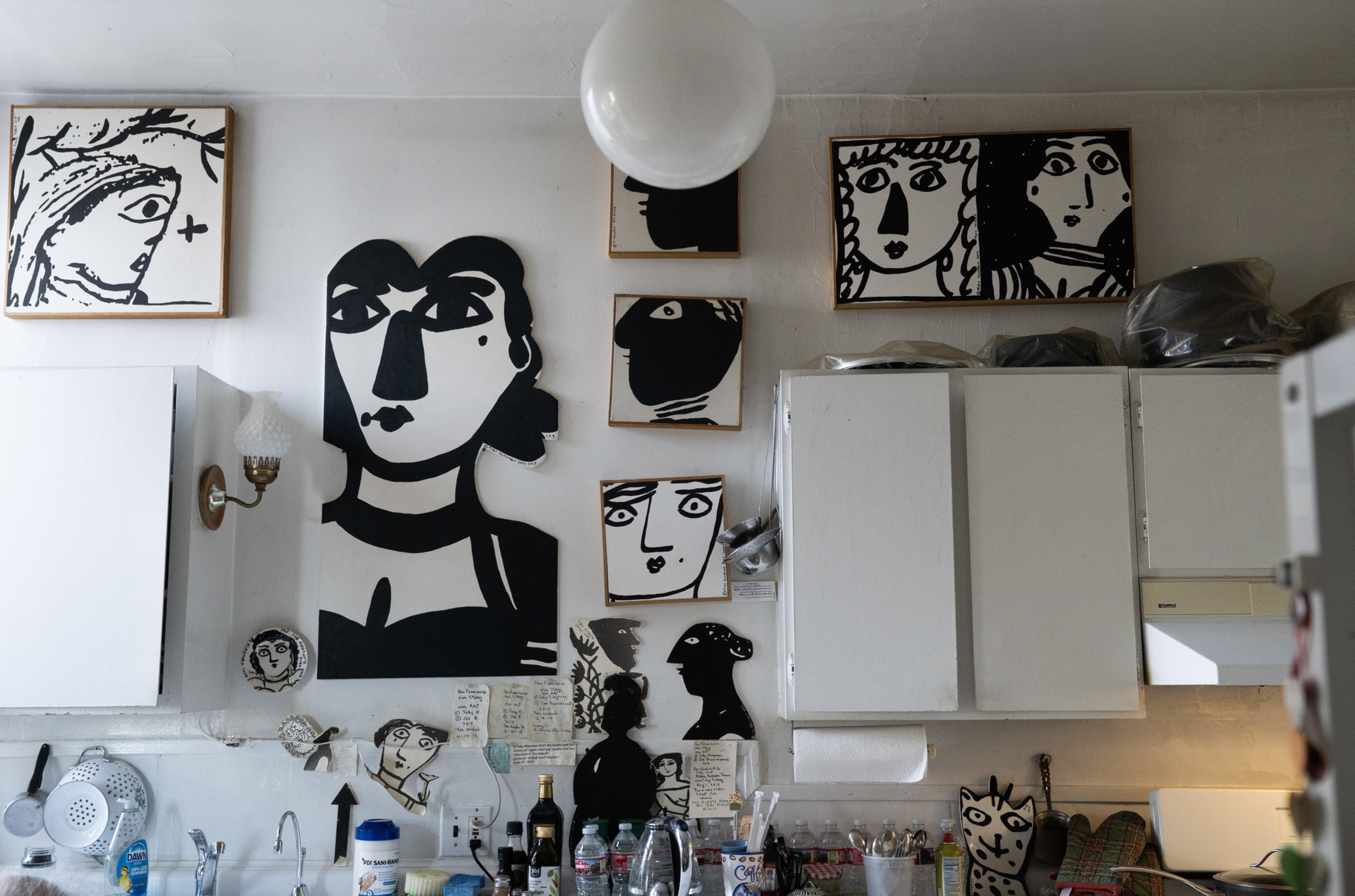
The AIDS epidemic took many of her students and friends, including collector and collaborator Cobbett Steinberg and photographer Crawford Barton.
Over the years, Klayman has seen it become increasingly difficult to take the artist’s way in San Francisco, with the closing of art schools and a winnowing of galleries willing to host emerging talent. “Why was City College campus at Fort Mason closed? Why did the Art Institute close? It’s all the cultural money going away,” Klayman says.
She doesn’t blame the tech industry for this change. Klayman embraces social media — Instagram and Pinterest (opens in new tab) are her favorites, and she’s speedy to communicate and engage there — and, so far, is unbothered by AI’s encroachment.
“They’re just people,” she says of her tech-world collectors. “They’ve got their passions; I’ve got mine.” She laughs about one Google-affiliated buyer who works on longevity research: “If he figures out how to make me live longer, I’ll be thrilled.”
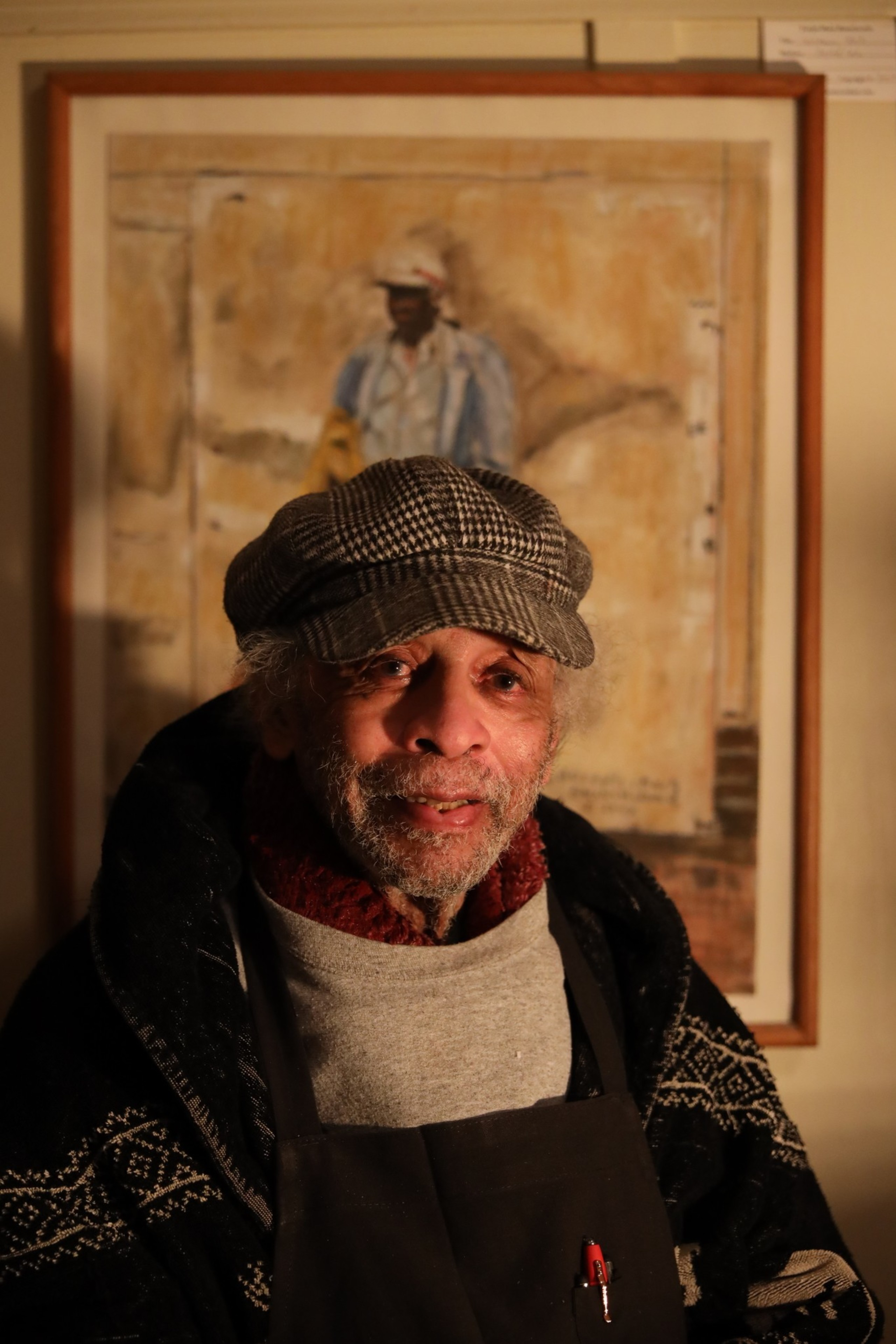
If there’s anyone especially relishing Klayman’s youthful vigor, it’s Branchcomb, who refers to Klayman as his “young wife.” They maintain their union with humor and lightness; during one of our encounters, Branchcomb left the kitchen, only to return with a vase of fresh-cut roses from the garden. “That’s beautiful, dear!” Klayman said. When they argue, she says, Branchcomb starts singing in pretend Italian to diffuse the tension. “He’s so ridiculous!”
“Toby has an amazing effect on people,” says collector Becca Jones, who met Klayman through Airbnb; her husband, Joe Zadeh, was one of the company’s first employees. “I fell in love with her and Joe, and she became a core person who inspired me and continues to do so.”
With all that love around her, what does Klayman wish for her legacy? She doesn’t want to think about it just yet; for now, she’s happy to keep working. “I have to be in the studio every day,” she says. “It’s just like brushing my teeth and saying hello to my husband.”
